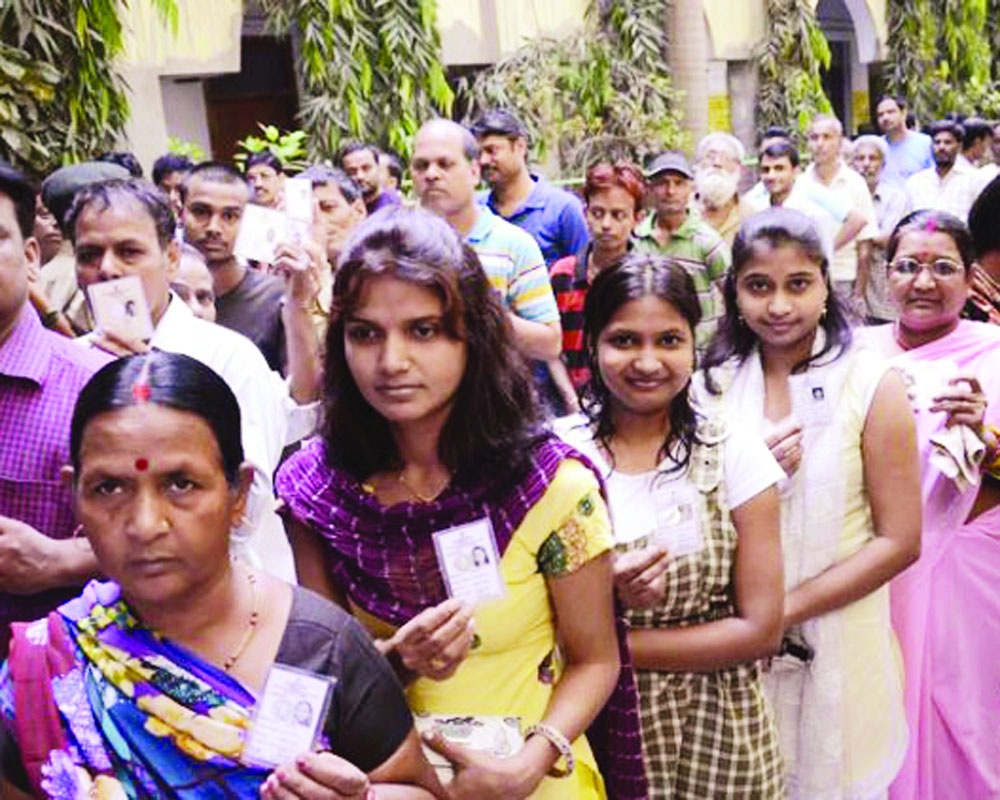As India makes its choice between polarities, EC prioritises logistical efficiency of the world’s biggest voting exercise
The General Elections in India are nothing short of a carnival, of people turning out in huge numbers to exercise their rights and choices in the world’s most populous democracy. And for all the chaos and cliches that the world labels us with, this is one enterprise that manages an organisational and logistic efficiency like no other. And the numbers go up every five years. Chief Election Commissioner Sunil Arora says that 900 million voters will exercise their franchise and security challenges mean that the election is spread across seven phases. In Jammu and Kashmir for example, where the commission is not risking a simultaneous Assembly poll unlike Andhra Pradesh, Arunachal, Sikkim and Odisha, Anantnag will vote for the Lok Sabha in three graded rounds. Of course, every election has a theme song, the 2014 one being one for a change that ushered in the Narendra Modi government on almost a monolithic verdict, marking the end of the coalition era. But with the incumbent now going to the electorate with a mixed bag of a report card, this time it is a battle of coalitions against one of just personality cult. And subsequent to a polarised India, there are two broad themes, a pillar-like leadership with a boldness of agenda and a shared leadership representing a diversity of causes. Politically speaking, national security has emerged as an emotive issue post Pulwama terror attacks and the Balakot airstrikes, at least across the North Indian heartland. Prime Minister Modi, who has changed the bilateral paradigm with Pakistan by redefining the contours of counter-terror operations, is using this as demonstrable proof of his muscular and single-minded leadership. The BJP is expected to go to town with this as a clutter-breaking formula, considering the Modi government has failed on other performance markers —- agrarian distress, poor GST management, a sluggish economy, joblessness, infrastructure bottlenecks and a lukewarm Make in India. Yes, ISRO has made great strides but Gaganyaan is a goal too far to sway the verdict. Pakistan is a visible, pan-India plank. However, the Election Commission in its infinite wisdom has banned the use of defence forces in election slogans and campaigns, reining in the tendency to politicise the forces.
The BJP is relying heavily on allies as it is now ruling in 15 states with their help. However, its own government is in just five states. So it needs to work on them, considering it has even jeopardised its new constituency in the Northeast with the Citizenship (Amendment) Bill. Its main rival, the Congress, has a government in four states and now with party general secretary Priyanka Gandhi Vadra formally joining hands with party chief Rahul Gandhi, there’s some spark in the Congress campaign. But it’s to do more in shoring up the Mahagathbandhan or the federal front of regional parties, rather than splitting the anti-BJP vote. Particularly in the bellwether state of UP. While it wants to grow its lost votes, tactically it needs the state parties now, all of whom have a committed vote pie. The Congress is losing the game of perception with its intransigence and whether its leaders like it or not, they have to be the glue for a united national alternative. The Opposition front desperately needs a counter narrative to Balakot and raise people’s issues stridently. It cannot appear to be falling back on reactive strategies. This election is about many firsts too. For the first time, all candidates will be asked to give details of their social media accounts while filing their nomination papers. And all platforms will be keenly vetted for clandestine campaigning and fake news dissemination. Two new demographics will have a sizeable effect on the verdict. The first is of the millennial first time voters, who are considered change makers, and the second, the women, who form half of the country’s electorate, who may force a change in discourse, given the impact of the Ujjwala scheme in rural areas in UP. Surely interesting times ahead as we stand at the crossroads.
























